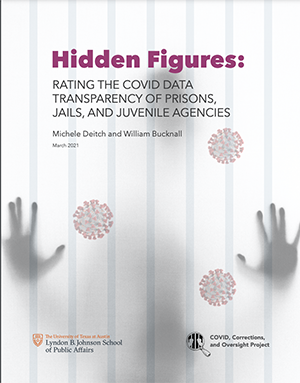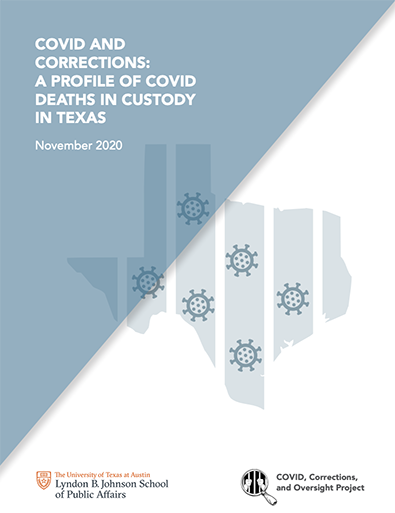Hidden Figures: Rating the COVID Data Transparency of Prisons, Jails, and Juvenile Agencies

Prisons, jails, and juvenile facilities are very dangerous places to be during a pandemic because they are essentially "petri dishes" for the spread of disease. Moreover, corrections facilities house people who are especially medically vulnerable to poor outcomes if they get infected with the coronavirus. As COVID-19 ravages prisons and jails across America, it is critically important to have a clear picture of what is happening inside these closed institutions. Data is key to transparency, since it is the only way to understand the full toll of the pandemic in correctional facilities and the risks faced by people who live and work in these settings, as well as risks to people in nearby communities. Effective oversight — by legislators, regulators, monitors, and others — requires access to meaningful and accurate data. Moreover, detailed and current data is essential to enable appropriate policy responses.
In this report, we identify the critical COVID-related metrics that corrections agencies should be tracking and reporting. We developed a grading rubric based on those metrics that we used to document and rate how well prisons, jails, and juvenile agencies are tracking and sharing data on COVID inside their facilities. Based on our fndings, we recommend ways in which prisons, jails, juvenile agencies, and state and local leaders should improve the reporting of data to meet the needs of this unprecedented time.
Our research fnds a troubling lack of transparency about the spread, toll, and management of COVID in state prisons, local jails, and state-run juvenile facilities. While some agencies, primarily state prison agencies, are publishing the most essential information about the number of COVID cases, deaths, and tests for people who live and work in these facilities, a great many others — especially jails and juvenile agencies — are not providing even this basic data. And few agencies provide information about other key metrics, such as demographic breakdowns of the data by race, ethnicity, age, and sex; information about how the impact of the virus is changing over time; the status of vaccination efforts; the numbers of people hospitalized; the numbers of people on lockdown or in medically-restricted housing; and changing population numbers.
This data gap means that policymakers, stakeholders, and the public do not know whether people in custody or the staff that work in these facilities are safe during this public health crisis; they cannot assess the risks to surrounding communities; and they do not know if correctional management approaches and policy responses are effective or equitable.


